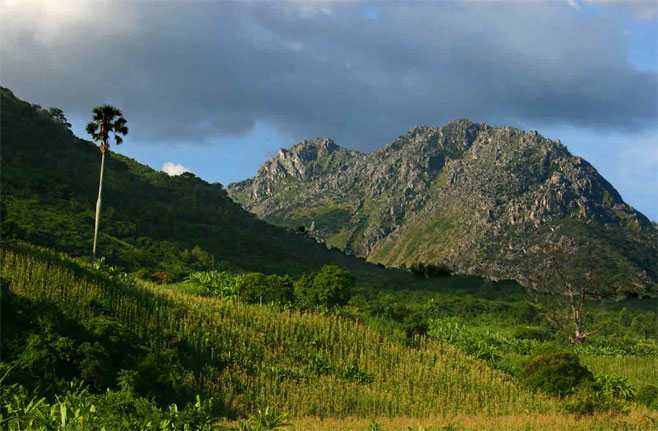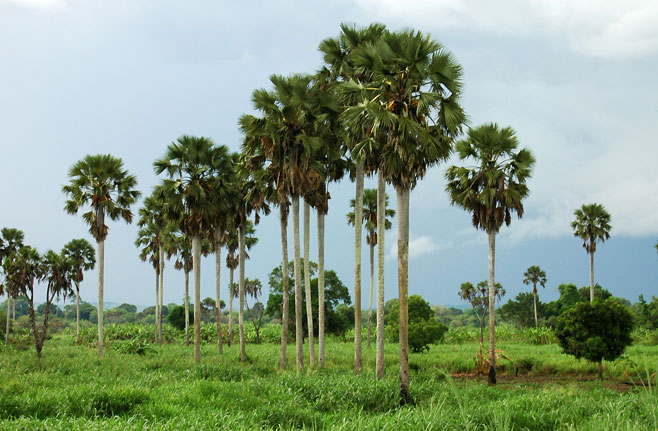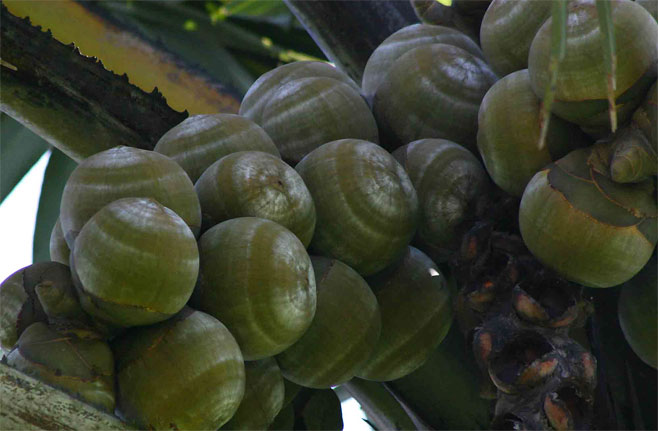|
Borassus aethiopum (Borassus palm, African
fan palm, Selati palm)
Life
> eukaryotes >
Archaeoplastida >
Chloroplastida
>
Charophyta > Streptophytina > Plantae (land plants)
> Tracheophyta (vascular plants) > Euphyllophyta > Lignophyta (woody plants)
> Spermatophyta (seed plants) > Angiospermae (flowering
plants)
> Monocotyledons > Order: Arecales> Family:
Arecaceae
 |
|
Borassus aethiopum, Rusitu Valley,
Zimbabwe. [photo Bart Wursten ©,
Flora
of Zimbabwe] |
 |
|
Borassus aethiopum, Messalo, Mozambique. [photo John E. Burrows ©] |
 |
|
Borassus aethiopum fruit, Gorongosa
National Park, Mozambique. [photo Bart Wursten ©,
Flora of
Mozambique] |
A large palm that grows to a height of 22 m. The stem has a distinctive swelling
near the top although this is also characteristic of some other palm species.
Could be mistaken for Hyphaene petersiana
but the leaves are larger (3-4 m long including petiole, versus 1.5 - 2 m),
and it has larger fruit (12-18 cm in diameter versus 4-5 cm). Within southern
Africa, the natural distribution of the two species barely overlaps.
Distribution and habitat
Native to Africa and India. Within southern Africa, occurs
in the Limpopo
Province (where it is rare), eastern Zimbabwe, and parts of Mozambique.
Ecological interactions
- Acts as a roosting and nesting site for:
Uses
- As in the two Hyphaene species, the sap it tapped
to turn into palm wine.
- The fruit palp can be eaten.
- In Mozambique, dugout canoes are made from the trunk.
References
- Esterhuyse, N., von Breitenbach, J. and Söhnge, H. 2001. Remarkable
Trees of South Africa. Briza Publications, Pretoria.
- Palgrave, K.C. and Palgrave, M.C. 2002. Trees of Southern Africa. 3rd
Edition. Struik Publishers, Cape Town.
- Palmer, E. and Pitman, N. 1972. Trees of Southern Africa covering all
known indigenous species in the Republic of South Africa, South-West Africa,
Botswana, Lesotho and Swaziland. Volume 1. A.A. Balkema, Cape
Town.
- van Wyk, B. and van Wyk, P. 1997. Field Guide to Trees of Southern
Africa. Struik Publishers, Cape Town.
|
